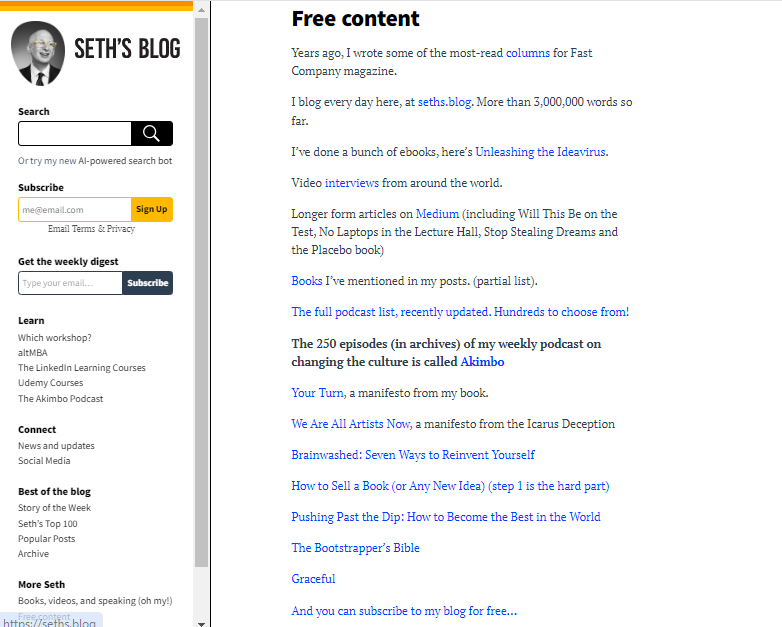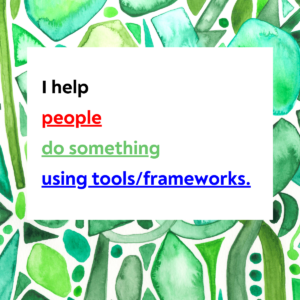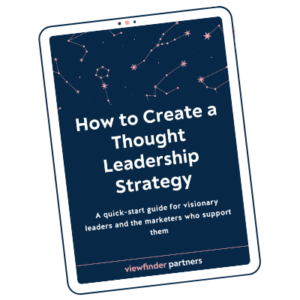New month, new terrifying headlines about AI’s growing power.
This week, I read an explainer in Fast Company called Is the ‘Dead Internet’ theory suddenly coming true? This could be a sign. The premise: what was once a fringe theory (the internet is increasingly dominated by bot-created content, not human thoughts) is becoming more and more true. A “dead” internet is almost entirely AI-generated.
The article is worth reading for its breakdown of Shrimp Jesus (?!) alone. But the reporter’s takeaway is powerful:
I used to think that the Dead Internet theory was just that—a theory, and an improbable one. Bots existed, but it was unlikely that the relatively dumb bundles of code behind them could have wiggled their way into every nook and cranny of the internet, generating nearly all of its content.
But with AI, it’s now possible that such a thing may happen, that AI could come to generate the majority of the content we humans see on the web. Indeed, a 2022 report from European law enforcement agency Europol pointed out that experts believe that as much as 90% of online content may be synthetically generated by 2026—90%!
If that’s the case, humans who want to engage with other humans and their creations may, for the first time in decades, have to avoid the internet and—gasp—return to the real world for authenticity.
Did you catch that? People who want to engage with other people (not bots) will have to find new forums if they want authentic connection. Or at least we’ll have to share ideas and create connection in new ways – not the way it worked in 2008, or 2012, or 2024.
While “AI slime” (the building block of a fully AI-generated online world) may be a completely serviceable new tool for learning basic information, it won’t fulfill our human need for authentic communication, idea-sharing, reflection, or dialogue.
In other words, in an era flooded with AI-generated content, thought leaders—the people who reflect on their work, make new connections, and share their ideas with others—will become more valuable, not less.
How can thought leaders compete with AI?
As I reflected on the Fast Company article, I looked back at what I’ve written lately about AI and thought leadership. I felt like I’d been down this road before.
I had.
In March 2023, I wrote Can AI Write Thought Leadership Content for You? [NOPE].
In October 2023, I wrote AI Can’t Do Your Most Important Thought Leadership Work for You
But instead of moving on to a new topic (Been there! Done that!), I think I should write about AI more frequently than every 6 months. As generative AI gets more powerful and ubiquitous, and more people start using AI-powered tools at work, we’re going to need to reflect more on the power and risk of AI and the implications for thinking people.
Here’s the advice I underscored for thought leaders in October 2023:
- AI can’t guess the answers to the most important questions about your business.
- You are the only one with your unique perspective. A robot can’t replicate that.
- Your perspective is your most valuable asset.
After six more months of watching AI develop, I have three new takeaways—with examples from thought leaders I’m watching who are doing an excellent job reflecting on their own ideas and sharing them powerfully.
Why committing to the practice of thought leadership is even more important in an AI-dominated world
AI is only as good as its source data. But your “source data” is infinite, rich, and mostly untapped.
AI’s source data is everything that’s ever been published online. That’s a ton of information, sure, and no human could compete with that quantity of information. AI-powered tools can give you a reasoned consensus on the best lasagna in New York, 100 synonyms for the word “leverage,” and suggestions for a well-worded resignation email, all in seconds.
But your human source data is your entire lived experience. Every conversation you’ve had, every decision you’ve made, every relationship you’ve nurtured, every mistake you’ve learned from, every joy and disappointment and failure and accomplishment.
I’d take the second (human) data set any day. AI can only mine things that have already been processed, explained, and published. But you have an incredible well of experiences, reflections, and feelings that you could explore all day, every day for the next 100 years and still not run out of data. Your human brain is a truly infinite data set.
Here’s an example. Behavioral economist and Wharton professor Katy Milkman shared a conversation with an Uber driver and the argument she made to him based on long-proven economic research. AI couldn’t have cataloged that cab ride or the “aha” moment it inspired:
Thought leaders have the exciting, scary, hard, fun job of exploring their human data set, mining it for stories, insight, advice, and emotion, and sharing it with other people. Humans win!
Reflection is the killer app.
Even if AI tools could somehow read your mind and put all of your thoughts and experiences into a massive database, there’s still a key ingredient missing. In order to turn that big soup of ideas into a meaningful message, you need reflection.
I see the power of reflection all the time in my work with thought leaders. They all have great source data—they may be the smartest person in their field, the most in-demand expert, or the most lauded scholar. They have a database of ideas, no problem. But the hard part—the step that turns all of those collected ideas into something powerful and meaningful—is reflection.
Some of my favorite podcasts are smart people reflecting on their experiences. That’s a common theme in shows I like, whether they’re about parenting, relationships, writing, or business. Here’s an example. In this episode of LinkedIn’s Hello Monday podcast, media veteran Jessi Hempel, senior editor at large at LinkedIn, shares her story about a career crossroads. But she doesn’t just share the facts – the data points on her resume. She shares how she felt at that key moment, the steps she took, and the realizations she uncovered. Then, she turns those personal reflections into a helpful framework anyone can use to diagnose their own career malaise.
Reflection is still the most valuable tool we have as humans. It’s what sets us apart from AI, sure, but also from most other humans. It’s hard work — and most people don’t have the time, inclination, privilege, or muscle to do well.
But thought leaders do. That’s why my #1 recommendation for developing thought leadership is to commit the time and headspace to a dedicated thought leadership practice. Reflecting is about making the time and space to connect the dots, find patterns, and generate new ideas based on your collected experience. Reflection is the killer app.
Thought leaders will need to keep innovating just like everyone else.
So, if you have an infinite database of usable ideas and commit the time and headspace to reflect on them, your thought leadership should be future-proof! …Right?
Here’s the catch. Thought leaders don’t live outside the realities of our changing environment. The AI-generated Internet will massively change how we communicate our ideas. So it’s important that thought leaders, from the most well-known modern bards to emerging thinkers, stay open, flexible, and ready to change.
For years, I’ve been telling people that I’m “format-agnostic.” I’m not a one-trick marketer, and I don’t identify as JUST a podcast producer, a book writer, a LinkedIn coach, or a speechwriter. I’m all of those things, and I’m ready to try something new tomorrow. Because even during my short career in online marketing, I’ve already seen the landscape completely change. Since 2008, I’ve worked on content strategies on every social media platform imaginable (remember Vine? Tumblr? Google+?), I’ve built giant blogs…and then dismantled them, I’ve pitched ideas to PR reps and sold directly to customers at trade shows and made images in the specific Pinterest-ready style of the month. It all keeps changing. And in 5 years, if we’re sharing ideas somewhere that doesn’t even involve the Internet anymore, I’ll be ready without batting an eye.
We can look to much-lauded marketing writer Seth Godin for inspiration. While he’s best known for his faithful blogging habit (his daily short-form writing has led to 7,000 blog posts and counting), I was struck by the diverse list of content formats he’s experimented with over the past 20 years. The list includes magazine columns, blogging, ebooks, videos, Medium articles, books, podcasts, and manifestos. The medium was never the point. The message was.
Part of the job of marketing (which includes marketing your ideas as a thought leader) is being aggressively format-agnostic. Today you’re sharing on LinkedIn, next it may be audio messages to subscribers, and after that you could be holding in-person roundtable discussions. Who knows what the future of thought leadership will look like?
The key is not to get too tied to any one format. The format doesn’t matter nearly as much as the message, and your job is to figure out how to deliver your message in a way that makes the intended impact. If the Internet becomes just a utilitarian tool manned by AI, that’s fine. We’ll find new spaces to share ideas.
So keep thinking, keep gathering your vast collection of ideas and experiences, and keep carving out precious hours to reflect. Your human ideas aren’t becoming less important—they’ve always been the most important thing.








